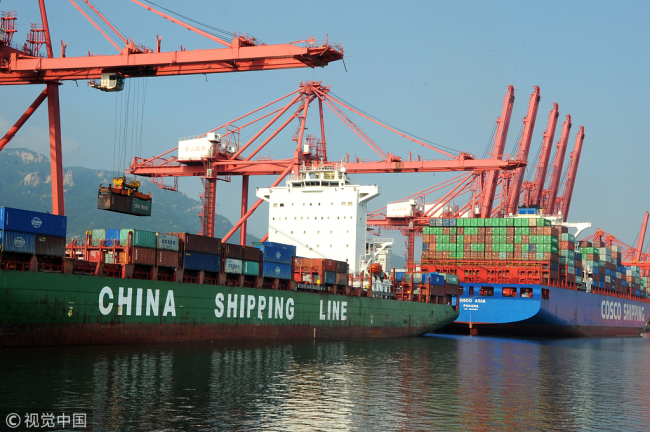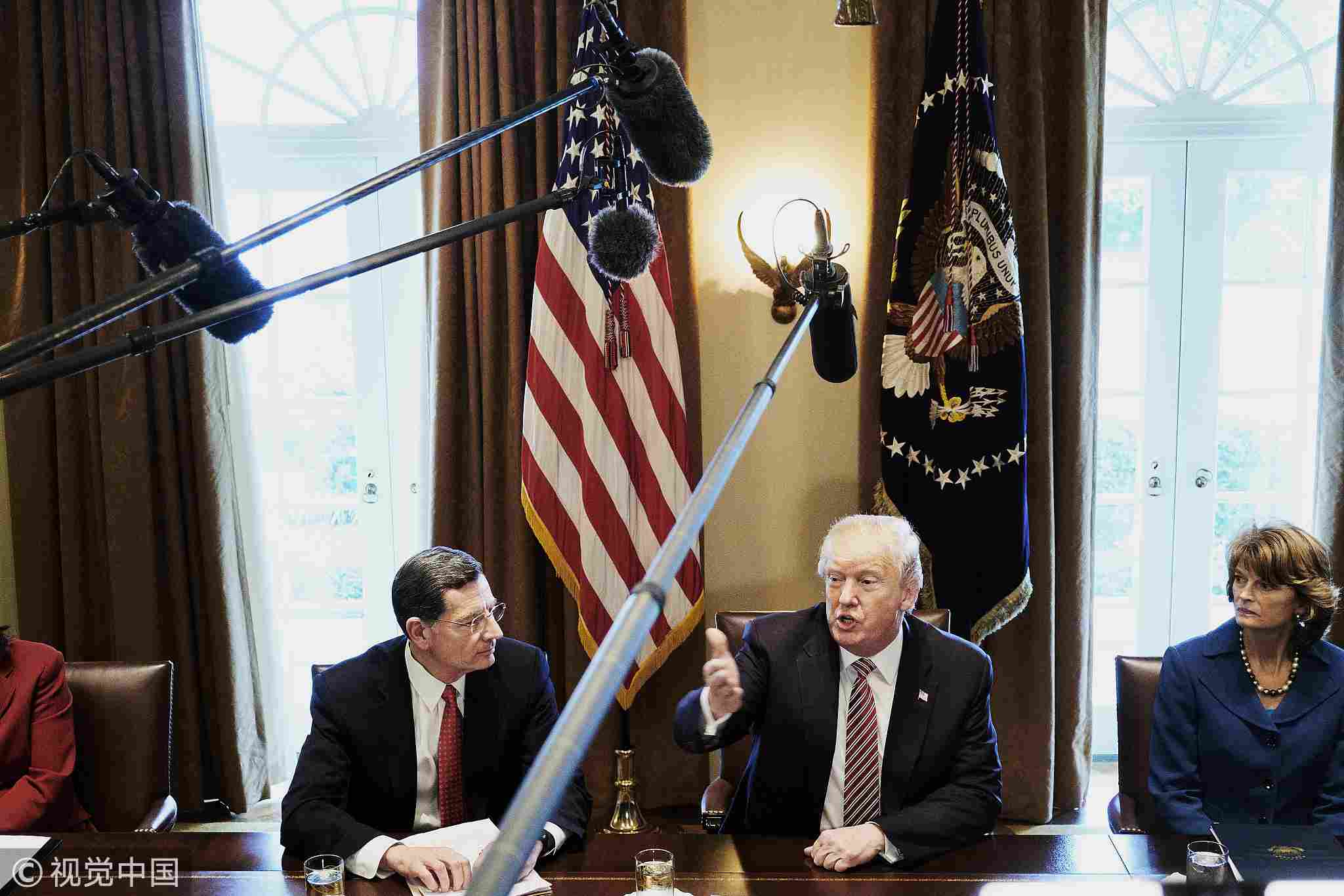
Opinions
11:25, 09-Aug-2018
Behind the US tariffs on 16 billion dollars’ worth of Chinese products
Updated
11:04, 12-Aug-2018

Editor's note: The article was first published on China Plus on Aug. 9. It reflects the author's opinions, and not necessarily the views of CGTN.
Following a 25-percent tariff on 34 billion dollars’ worth of Chinese products exported to the United States starting July 6, the US Trade Representative’s Office announced on Aug. 7 that it would add a 25-percent tariff on a further 16 billion dollars of Chinese products, to be implemented on Aug. 23.
A spokesman for the Chinese Ministry of Commerce stated on Wednesday that the US was using domestic laws to override the international law, which was a very unreasonable practice.
In order to safeguard its legitimate rights and interests and the multilateral trading system, China is obliged to take necessary counter-measures and has opted to impose a 25-percent tariff on 16 billion dollars’ worth of US imports, to be implemented in parallel with the US.
The Chinese response is concise, rational and calm. It can be seen that after more than four months of confrontation, China has become acquainted with the US side's means of blackmailing.
Rather than be surprised by constant pressure from the US, China is well prepared. In the face of the US practice of continuous escalation of the trade war, China has adopted the principle, "I don't want to fight, I am not afraid to fight, but I will fight if necessary." The firm action taken by China is intended to further deepen reform and opening up, and do well in its own affairs. Such a policy speaks for itself.
One reason the US has given for engaging in a trade war is "American national security," so as to help manufacturing return to the country and create more jobs for Americans, but the consequences are actually quite surprising.

August 8, 2018: Two ships are loading goods for export at a container terminal of Lianyungang Port, east China's Jiangsu Province. / VCG Photo.
August 8, 2018: Two ships are loading goods for export at a container terminal of Lianyungang Port, east China's Jiangsu Province. / VCG Photo.
Take the list of 16 billion dollars’ worth of Chinese exports to the United States as an example. The Office of the US Trade Representative recently held a hearing on whether or not to impose tariffs. A total of 82 delegates from the US chemical, electronics, and photovoltaic industries spoke up.
They expressed a general concern that higher tariffs would raise costs for enterprises, resulting in the loss of jobs, ultimately damaging the US economy, reducing the competitiveness of US industries, and even forcing some small and medium-sized enterprises to close. In the end, only six of the representatives agreed to the imposition of tariffs, accounting for 7 percent of the total.
Faced with such a disparity, as well as the widespread opposition from American companies and industry associations, the US government still made the decision to impose tariffs on Chinese products worth 16 billion US dollars, which beggars belief. It would appear that such a hearing in the trade war is merely a statutory process, and overwhelming objections can be vetoed by a small number of policymakers.
For US government officials, the imposition of additional tariffs is not only aimed at restraining China’s development and achieving the “America First” goal, but is driven by other considerations. The New York Times reported that since May, the US Commerce Department has received 20,000 applications from companies requesting exemptions from steel tariffs for their products, but not one of them has been granted.
Two of America’s biggest steel manufacturers have also successfully helped the government object to hundreds of requests by American companies that buy foreign steel to exempt themselves from the metal tariffs, claiming that the tariffs are safeguarding national security and boosting domestic steel production.

Feb.14, 2018, Donald Trump is speaking about the new tariffs on aluminum and steel imports during a meeting with bipartisan members of Congress. / VCG Photo.
Feb.14, 2018, Donald Trump is speaking about the new tariffs on aluminum and steel imports during a meeting with bipartisan members of Congress. / VCG Photo.
The report pointed out that several top officials of US President Donald Trump’s administration have deep ties to the steel industry. For instance, Commerce Secretary Wilbur Ross bought and operated several steel companies, which he later sold at a profit.
The US Trade Representative Robert Lighthizer represented United States Steel and other steel manufacturers in private practice as a lawyer. America’s second largest steel manufacturer Nucor once spent one million US dollars to fund “Death by China,” a documentary made by Peter Navarro, who’s now the director of the White House National Trade Council.
Will imposing additional tariffs really safeguard US national security? US government officials may still feel unsure, but one thing they are certain of is that imposing additional tariffs will benefit themselves. Under such a consideration, they’ve turned a blind eye to the suffering of US enterprises and consumers.
In recent days, there has been a succession of bad news in the US.
Element Electronics announced on Aug. 6 that it would shut down its plant in South Carolina and lay off 126 people from a workforce of 134. The firm blamed tariffs on Chinese imports, especially additional tariffs on the main components of TV sets, for its decision, as tariffs had increased their costs.
The Peterson Institute for International Economics estimated that as many as 195,000 US workers could lose their jobs over the next three years if the US’ 25-percent tariffs on car imports worldwide take effect. If other countries retaliate and tax similar products, 624,000 US jobs could be lost.
A study by the Federal Reserve Bank of Atlanta on Aug. 7 suggested that tariffs prompted almost one-fifth of US businesses to review, postpone or cancel their capital spending plans. The study noted that the current negative effects brought by trade frictions to US business investment mainly focused on the manufacturing sector, but the effects could easily grow if tensions escalate.
Due to trade frictions, milk from the United States, a product that is highly dependent upon the overseas market, has seen its price fall to 15 US dollars per 100 lbs.

A worker prepares to package a pail of milk into retail sachets on Aug. 1, 2018. / VCG Photo.
A worker prepares to package a pail of milk into retail sachets on Aug. 1, 2018. / VCG Photo.
Sarah Lloyd, a dairy farmer from the US state of Wisconsin, told the media that their family had a dairy farm with a history of some 100 years, which now sees a loss of 30,000 US dollars every month. She said if they couldn’t see light at the end of the tunnel soon, she couldn’t imagine milking cows next year.
The domestic consumer goods market of the United States, from Coca-Cola to recreational vehicles, from toys to clothing, is undergoing a wave of price hikes under the shadow of the so-called US national security.
Right after the US side declared its decision to impose the 25-percent tariff on Chinese imports worth 16 billion US dollars, some American netizens have rightly pointed out that this would mean an increase of 25 percent in costs for American consumers, a burden that would fall disproportionately on low-income families as they have greater exposure to Chinese consumer products. The US government is using tariffs as a big stick, which is injurious not only to the country itself, but also the people, for whose well-being they claimed to be working.
In the face of increasingly vociferous opposition to the imposition of tariffs, might the US government actually do something to comply with the will of the people?

SITEMAP
Copyright © 2018 CGTN. Beijing ICP prepared NO.16065310-3
Copyright © 2018 CGTN. Beijing ICP prepared NO.16065310-3